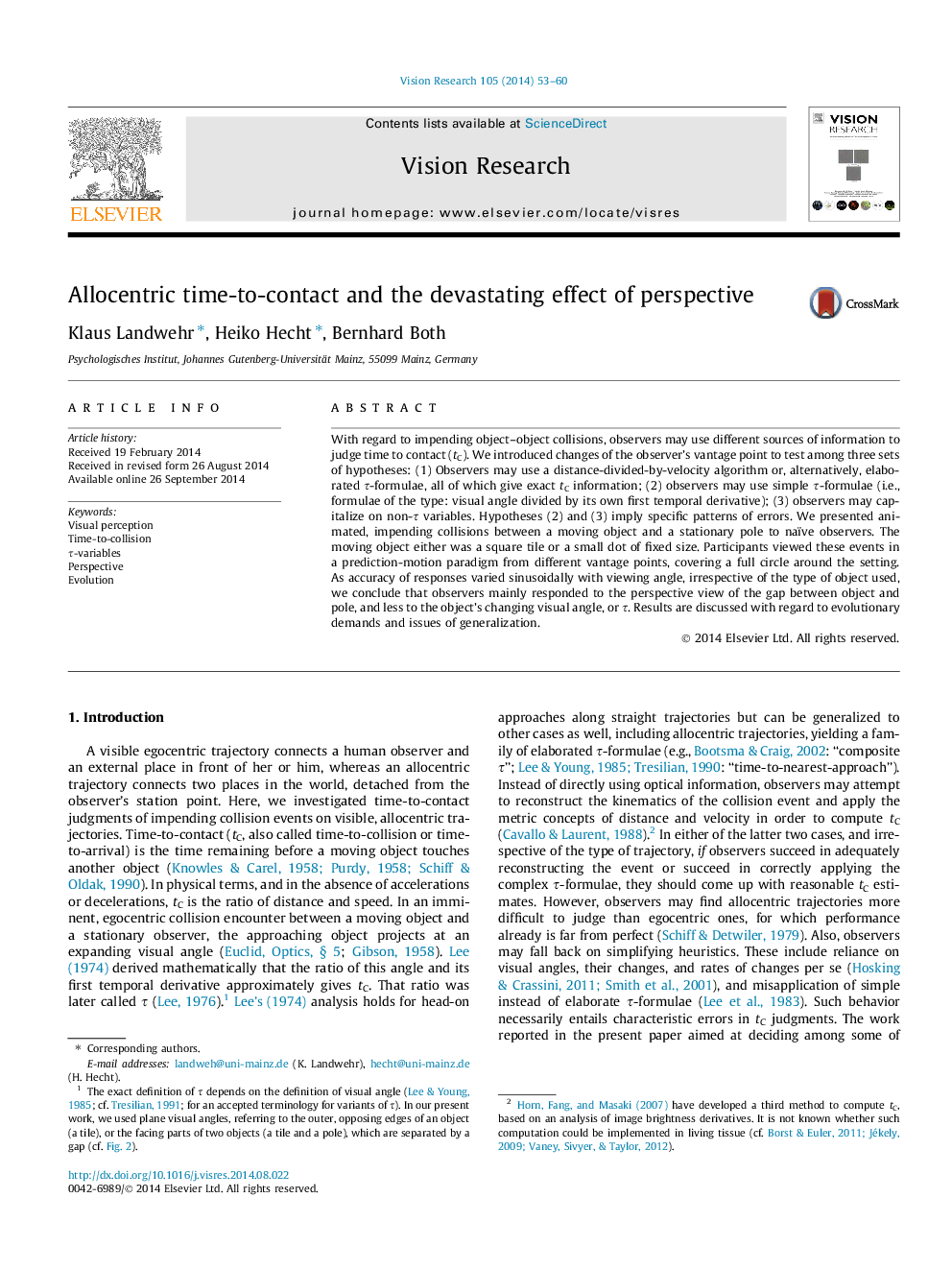| Article ID | Journal | Published Year | Pages | File Type |
|---|---|---|---|---|
| 6203263 | Vision Research | 2014 | 8 Pages |
â¢Time-to-contact judgments varied with extrapolation times in prediction-motion.â¢Judgments varied sinusoidally with the perspective view on the motion trajectories.â¢Performance was best predicted by the visual gap angle at the start of the event.
With regard to impending object-object collisions, observers may use different sources of information to judge time to contact (tC). We introduced changes of the observer's vantage point to test among three sets of hypotheses: (1) Observers may use a distance-divided-by-velocity algorithm or, alternatively, elaborated Ï-formulae, all of which give exact tC information; (2) observers may use simple Ï-formulae (i.e., formulae of the type: visual angle divided by its own first temporal derivative); (3) observers may capitalize on non-Ï variables. Hypotheses (2) and (3) imply specific patterns of errors. We presented animated, impending collisions between a moving object and a stationary pole to naïve observers. The moving object either was a square tile or a small dot of fixed size. Participants viewed these events in a prediction-motion paradigm from different vantage points, covering a full circle around the setting. As accuracy of responses varied sinusoidally with viewing angle, irrespective of the type of object used, we conclude that observers mainly responded to the perspective view of the gap between object and pole, and less to the object's changing visual angle, or Ï. Results are discussed with regard to evolutionary demands and issues of generalization.
